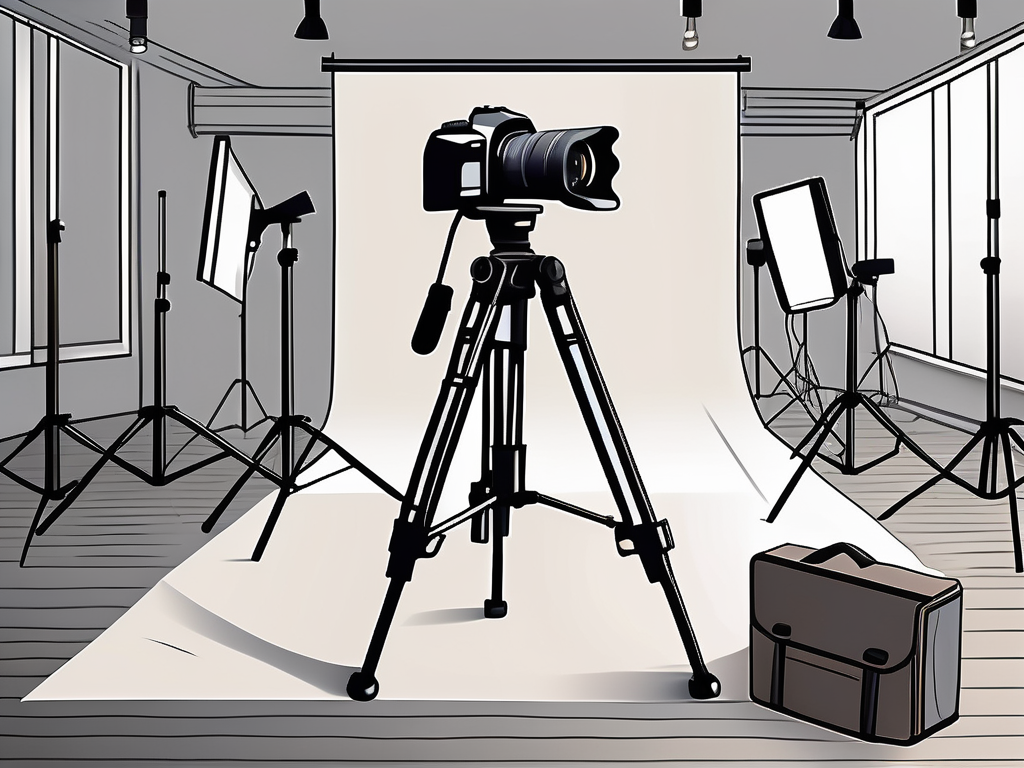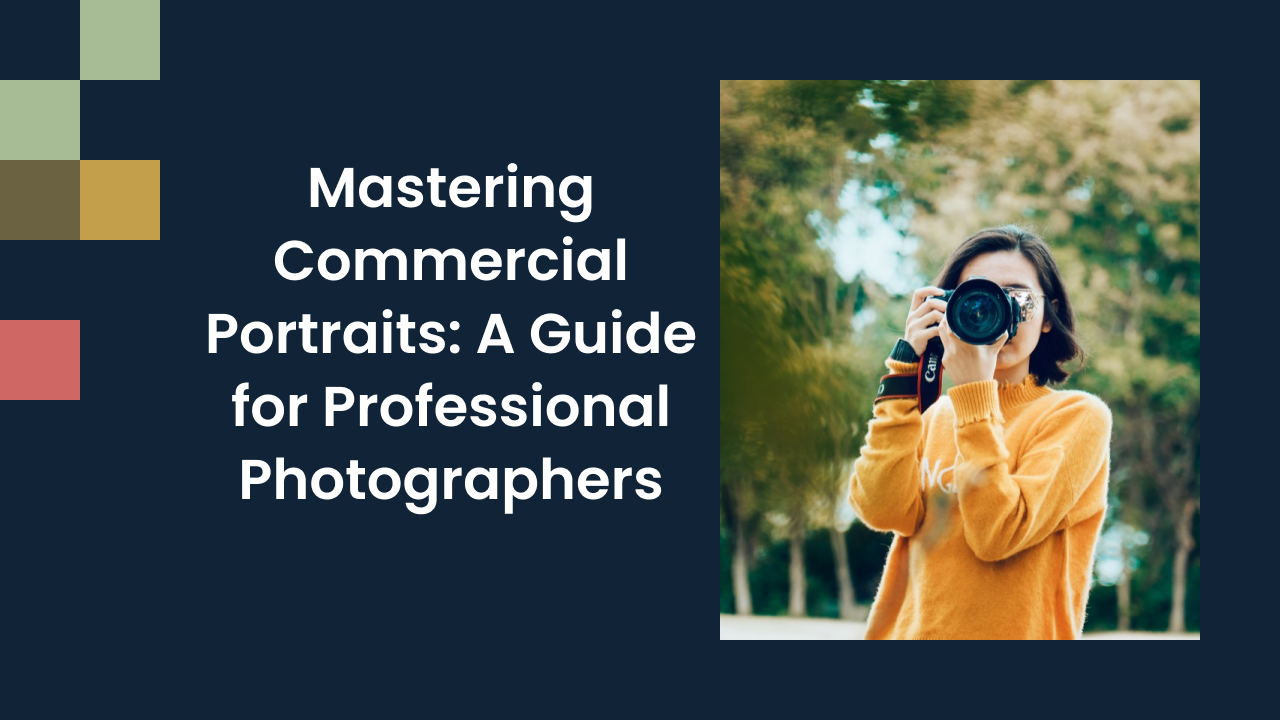Mastering Commercial Portraits: A Guide for Professional Photographers

Mastering Commercial Portraits: A Guide for Professional Photographers
Commercial portraits play a crucial role in the world of business. They provide a powerful means of communication, allowing brands and individuals to showcase their personality, professionalism, and values. In this comprehensive guide, we will delve into the art of commercial portrait photography, exploring everything from understanding the basics to building a successful business.
Understanding the Basics of Commercial Portraits
Before diving into the technical aspects of commercial portrait photography, it is essential to have a clear understanding of what defines a commercial portrait. Unlike traditional portraits, commercial portraits are specifically created for commercial purposes, such as advertising, branding, or promotion.
Commercial portraits are designed to capture the essence of a person or a brand, highlighting their unique qualities and creating a lasting impression on the viewer. Understanding this distinction is fundamental for professional photographers aiming to master the art of commercial photography.
Defining Commercial Portraits
A commercial portrait is an image that is captured with the intention of promoting a business, product, or individual. It should effectively convey a message, evoke emotion, and persuade viewers to engage with the subject matter.
When it comes to commercial portraits, photographers often collaborate closely with their clients to understand the specific goals and objectives of the project. This collaboration allows photographers to tailor their approach and create images that align with the client's brand identity and target audience.
Commercial portraits can take various forms, depending on the context and purpose. They can range from headshots of executives to lifestyle photographs showcasing products in action. Each type of commercial portrait requires a different approach and skill set to effectively capture the desired message.
The Importance of Commercial Portraits in Business
Commercial portraits are an invaluable tool for businesses. They provide an opportunity to create a visual identity that resonates with the target audience and sets the brand apart from competitors. Whether it's a CEO's headshot or a lifestyle photograph showcasing a product, commercial portraits can make a lasting impact on clients and customers.
One of the key benefits of commercial portraits is their ability to humanize a brand. By featuring real people in the images, businesses can establish a sense of trust and authenticity with their audience. This human connection can significantly influence consumer behavior and drive engagement.
Moreover, commercial portraits allow businesses to showcase their products or services in a visually appealing and compelling way. By capturing the essence of the brand and effectively communicating its value, commercial portraits can attract attention, generate interest, and ultimately drive sales.
Furthermore, commercial portraits play a crucial role in building brand recognition and recall. When done well, these images can become synonymous with a brand, making it instantly recognizable and memorable. This visual consistency across marketing materials helps reinforce brand identity and establish a strong presence in the market.
In conclusion, commercial portraits are not just ordinary photographs. They are powerful tools that can shape the perception of a business, product, or individual. By understanding the fundamentals of commercial portrait photography and leveraging its potential, professional photographers can create compelling images that leave a lasting impression on viewers.
Essential Equipment for Commercial Portrait Photography
Investing in the right equipment is crucial for capturing high-quality commercial portraits. Here are two key areas to focus on:
Choosing the Right Camera
When it comes to commercial portrait photography, having a camera that allows for manual control over settings is essential. This gives you the flexibility to adjust exposure, focus, and depth of field to achieve the desired result.
Let's dive deeper into the importance of each of these settings:
Exposure: The exposure of a photograph refers to the amount of light that reaches the camera's image sensor. By manually controlling the exposure, you can ensure that your subject is properly lit and that the image has the desired level of brightness and contrast.
Focus: Achieving sharp focus is crucial in commercial portrait photography. By manually adjusting the focus, you can ensure that your subject's eyes, which are often the focal point of the image, are crisp and clear.
Depth of Field: The depth of field refers to the range of distance in a photograph that appears acceptably sharp. By controlling the aperture, you can adjust the depth of field to create a shallow or wide focus, depending on the desired effect.
Now that we understand the importance of manual control over camera settings, let's move on to the next key area of equipment.
Importance of Lighting Equipment
Lighting is an essential element in commercial portrait photography. Investing in quality lighting equipment, such as strobes or continuous lights, will enable you to have full control over the lighting conditions and bring out the best in your subjects.
Here are some factors to consider when choosing lighting equipment:
Power: The power output of your lighting equipment will determine how much light it can produce. This is especially important when shooting in large spaces or when you need to overpower ambient light.
Modifiers: Lighting modifiers, such as softboxes, umbrellas, and reflectors, can help you shape and control the light. They can soften harsh shadows, create pleasing catchlights in the subject's eyes, and add depth and dimension to your images.
Color Temperature: Different light sources have different color temperatures, which can affect the overall mood and color balance of your photographs. Investing in lighting equipment that allows you to adjust the color temperature will give you more creative control over the final look of your images.
By investing in the right lighting equipment, you can create beautifully lit commercial portraits that stand out from the crowd.
Techniques for Capturing Striking Commercial Portraits
Aside from having the right equipment, mastering various techniques is key to capturing striking commercial portraits. Let’s explore two important aspects:
Mastering the Art of Posing
Posing is an art form in commercial portrait photography. The right pose can convey specific emotions, portray confidence, or highlight certain features. It is crucial to guide your subjects and ensure they feel comfortable in front of the camera to achieve the desired results.
When it comes to posing, it's important to consider the subject's body language and facial expressions. A slight tilt of the head can add elegance and sophistication, while a relaxed and natural smile can create a friendly and approachable vibe. Experiment with different poses and angles to find the most flattering and impactful compositions.
Another technique to master is the use of props. Props can add depth and interest to a commercial portrait, helping to tell a story or convey a specific message. For example, a chef holding a whisk or a painter with a palette can instantly communicate their profession and add visual appeal to the image.
Furthermore, understanding the concept of negative space can enhance the overall composition of a commercial portrait. Negative space refers to the empty areas surrounding the subject. By strategically placing the subject within a larger empty space, you can create a sense of balance and draw attention to the main focal point.
Utilizing Backgrounds Effectively
The choice of background can greatly impact the mood and overall impression of a commercial portrait. Experiment with different settings to find the perfect backdrop that complements the subject and harmonizes with the message you want to convey.
Consider the location and environment where the portrait will be taken. Is it an urban setting with tall buildings and bustling streets, or a serene natural landscape with lush greenery? Each background will evoke different emotions and set the tone for the image.
Additionally, pay attention to the colors and textures in the background. A vibrant and colorful background can add energy and excitement to the portrait, while a simple and neutral background can create a clean and timeless look. Experiment with different lighting conditions to further enhance the background and create depth in the image.
Furthermore, don't be afraid to incorporate elements that are relevant to the subject's profession or interests. For example, a musician could be photographed against a backdrop of musical instruments or a fashion designer surrounded by fabrics and sketches. These elements can add context and visual interest to the portrait.
In conclusion, mastering the art of posing and utilizing backgrounds effectively are crucial techniques for capturing striking commercial portraits. By understanding how to guide your subjects and create visually appealing compositions, as well as selecting the right backdrop to enhance the overall mood and message, you can create captivating images that leave a lasting impression.
Post-Production Processes in Commercial Portrait Photography
Once you have captured your commercial portraits, the journey doesn't end there. Post-production plays a vital role in enhancing the final result. Consider the following:
Editing Techniques for Commercial Portraits
Edit your photographs using software like Adobe Photoshop or Lightroom to enhance colors, adjust exposure, and remove any distractions. Applying tasteful edits can elevate the overall quality of your commercial portraits.
Retouching and Enhancing Commercial Portraits
In certain cases, retouching can be utilized to remove imperfections and achieve a polished look in commercial portraits. However, it is important to strike a balance and maintain authenticity, avoiding excessive retouching that may distort reality.
Building a Successful Commercial Portrait Photography Business
Now that you have a solid foundation in commercial portrait photography, it's time to explore how to turn your passion into a thriving business:
Marketing Your Commercial Portrait Services
Effective marketing is essential for attracting clients and establishing your presence in the industry. Utilize social media platforms, create a professional website, and network with potential clients to showcase your portfolio and attract new opportunities.
Pricing Strategies for Commercial Portrait Packages
Setting the right prices for your services is crucial to ensure your business remains profitable. Consider factors such as your experience, equipment investment, and market demand when determining your pricing strategy.
Mastering commercial portraits as a professional photographer requires a combination of technical expertise, artistic vision, and business acumen. By understanding the basics, investing in the right equipment, honing your techniques, and effectively marketing your services, you can embark on a rewarding journey as a commercial portrait photographer.



